
This picture is considered one of the best works of Vermeer. Her plot is very unusual. The artist rarely depicted, “poor life” and ordinary women of the people. Usually maidens are present in his works only in the neighborhood with well-dressed rich ladies. It is noticeable, meanwhile, that Vermeer gets great pleasure writing out the rough texture of the items present in the “Maidservant with the Jug of Milk”.
Muddle, long-worn glass window, bodice of cheap cloth, wall with peeling plaster, garbage on the floor – all these details are worked out not only carefully, but also lovingly. Invariably fascinates the viewer and the figure of the protagonist of the canvas. Her posture is filled with calm concentration. Hardened hands of the girl so habitually and dexterously hold the pitcher, that their gesture seems even elegant. The servant’s face can not be called beautiful. But so amazingly noticed in him by the master is the fleeting freshness of youth, so the morning light from the window falls on him, that it seems infinitely nice.
The main role in this picture is, of course, the light. It determines the atmosphere of the whole scene. If you look at the brightest areas of the work, you can see that Vermeer writes light clusters. These clusters, especially clearly visible on the neck of the pitcher and the pens of the basket with bread.
While the milk of Jan Vermeer is pouring from the jug, one can certainly be called one of the subtlest lyrical painters. He skillfully depicts things: the bread in his picture looks more “corn” than in life, the starched mint cap of a servant shines whiter than snow. But is this the power of the artist over the viewer? Sor on the kitchen floor, sunlight flashing, trembling on the handle of the pitcher – all this in itself, apart from each other means nothing. Then what is it? Hardly the best picture of Vermeer – “A servant with a jug of milk”.
A thin trickle of milk poured into a bowl means something that only very roughly can be expressed in the words “while.” Milk is poured out, and on the face of the servant there is a morning, “untouched” swelling, and the rub is not swept out the door, and one glass is missing in the window cover. And all this together – while the milk is pouring from the jug – it becomes what is lighter than air. And for some reason – it is not known how and why – this very time is most like an eternity.
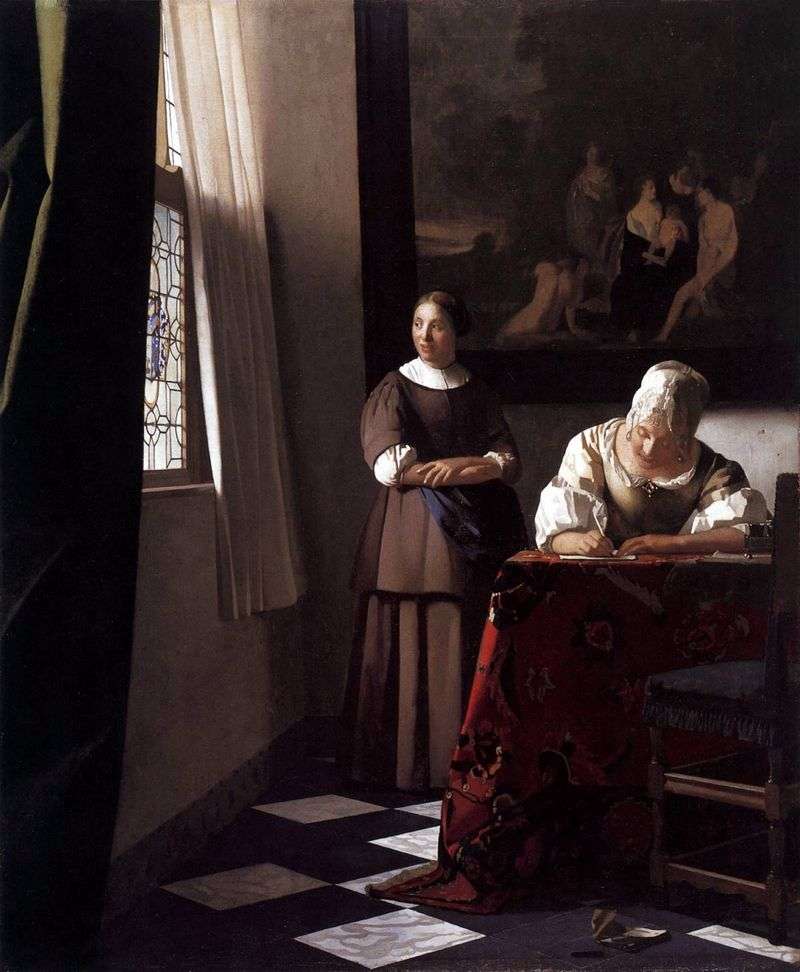 Reply message by Jan Vermeer
Reply message by Jan Vermeer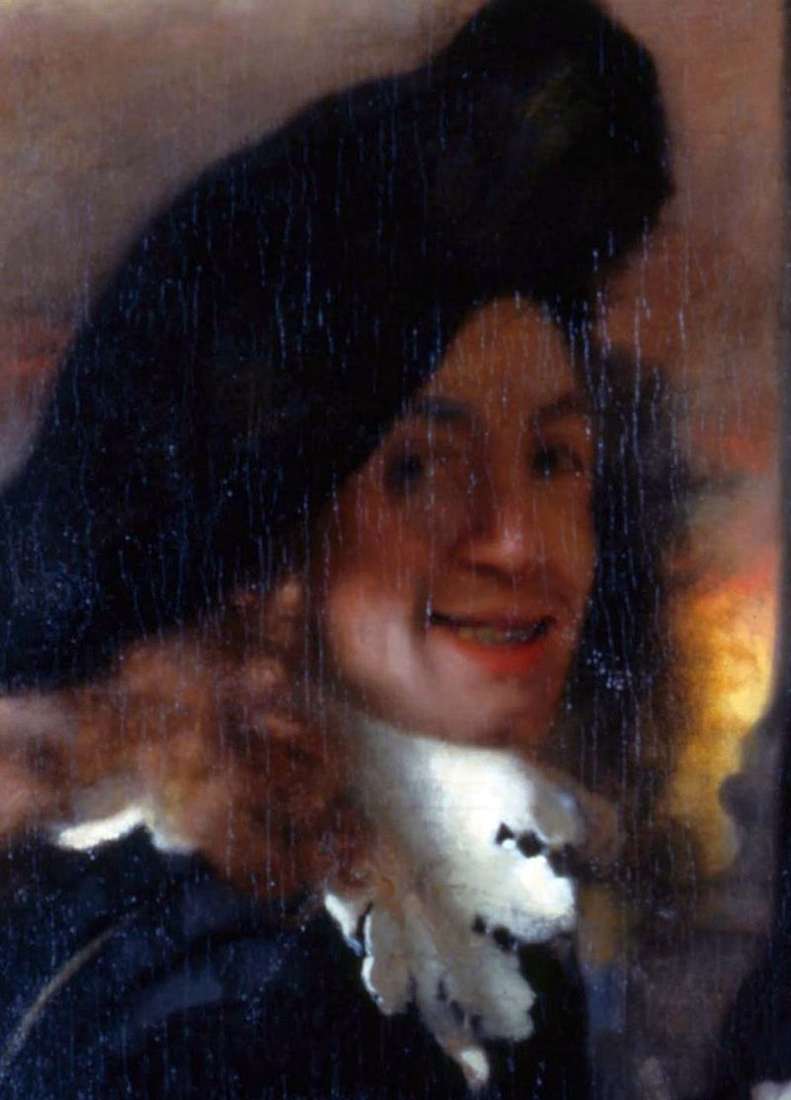 Self-portrait by Jan Vermeer
Self-portrait by Jan Vermeer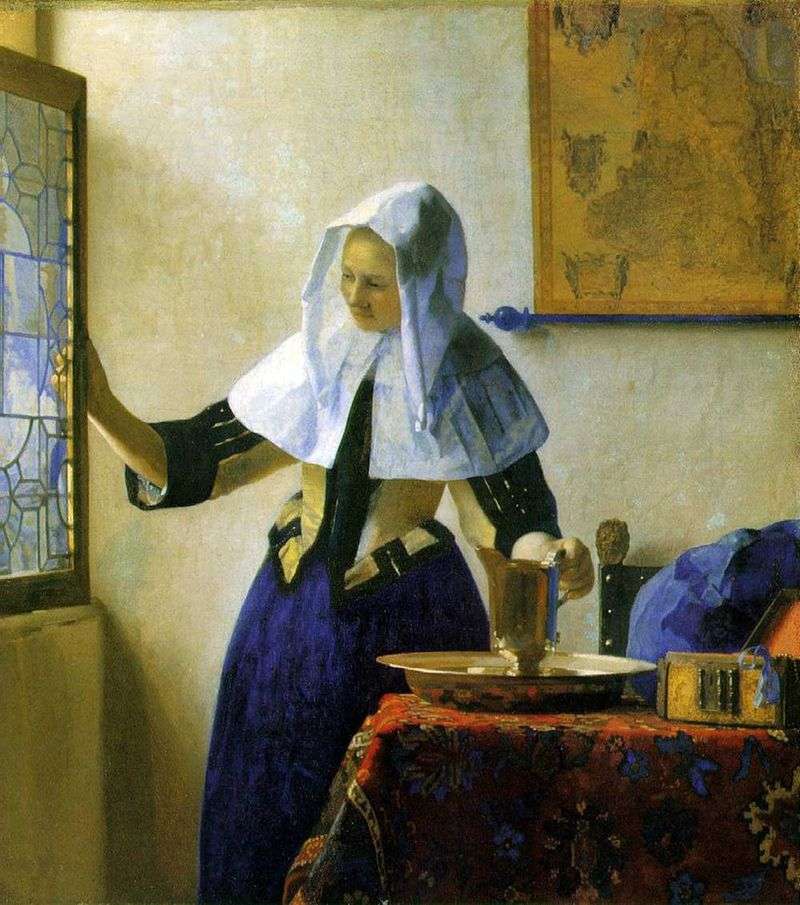 Girl with a water jug - Jan Vermeer
Girl with a water jug - Jan Vermeer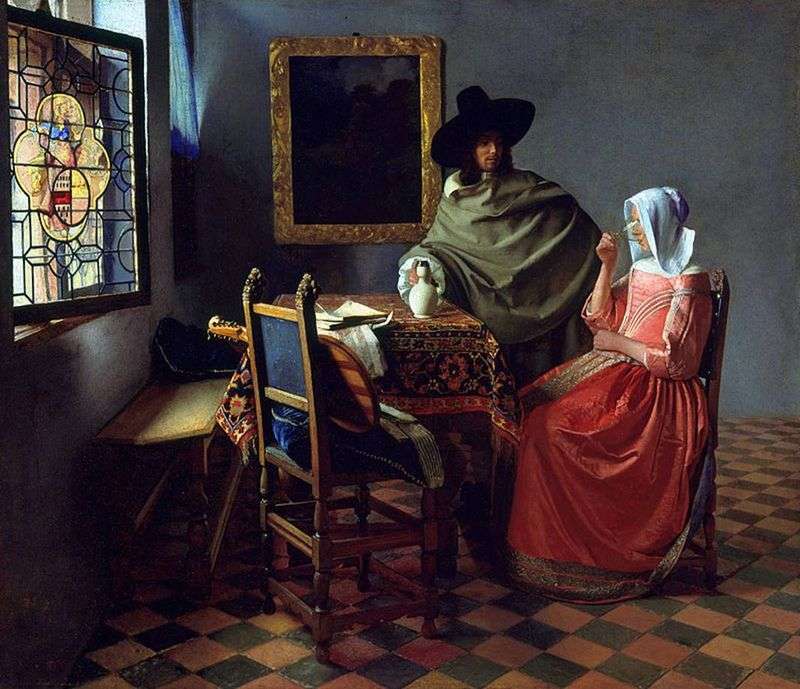 Cavalier, who treats the lady with wine ( Glass of wine ) by Jan Vermeer
Cavalier, who treats the lady with wine ( Glass of wine ) by Jan Vermeer Officer and laughing girl by Jan Vermeer
Officer and laughing girl by Jan Vermeer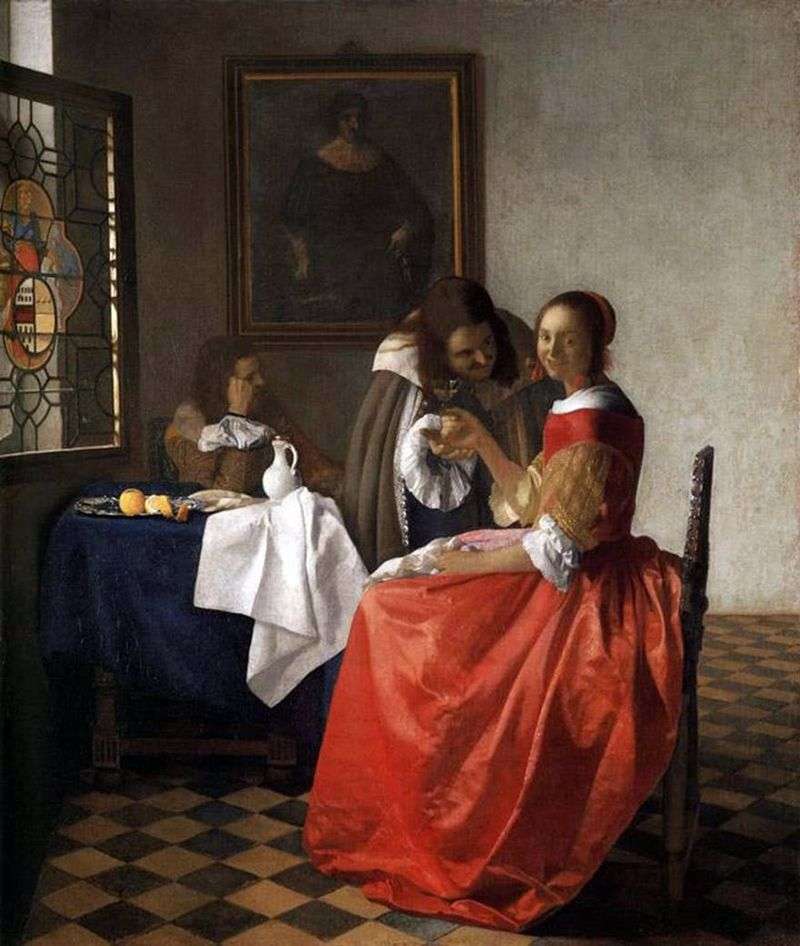 Lady and two gentlemen by Jan Vermeer
Lady and two gentlemen by Jan Vermeer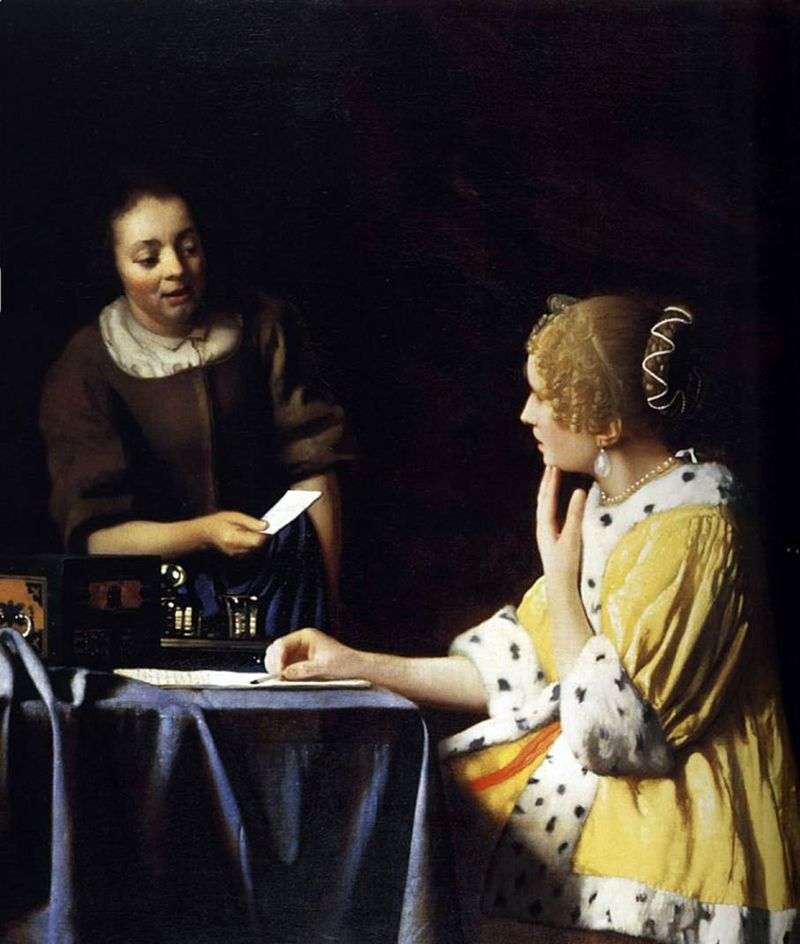 The lady and her maid with a letter by Jan Vermeer
The lady and her maid with a letter by Jan Vermeer Young woman with a water jug - Jan Vermeer
Young woman with a water jug - Jan Vermeer